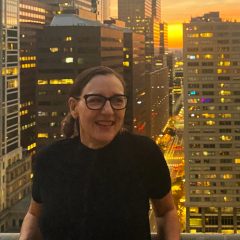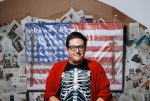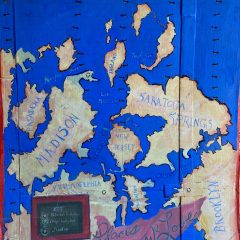This is part 2 of a story about contemporary art and artists in Wilmington.
After my tour of the new subsidized housing for artists at Shipley Lofts (great windows), I took some pictures of the changes going on nearby, including David Bromberg’s violin shop directly across from Delaware College of Art and Design (DCAD) and a WXPN makeover of the Queen Theater, another venue being built for World Cafe concerts in Wilmington.
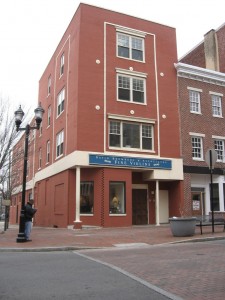
Wilmington may not have as much as Philly, but it is a lot more nimble in getting things moving.
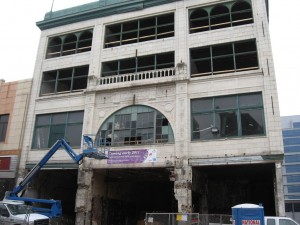
Then I left Market Street and headed to DCCA, for several years now the mainstay of contemporary art in Wilmington.
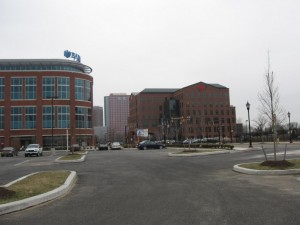
Around DCCA there were more signs of development. I hadn’t been there for years, and since then banks, businesses and new apartments had arisen from the empty lots surrounding the pioneering art center. Longsdorf came to the door just as I arrived and introduced me to still more people.
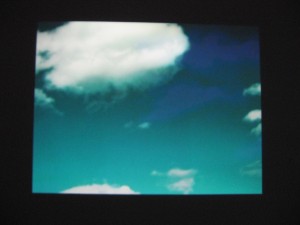
Inside was a show of digital landscape animations, Time-Image, by Lee Arnold. Arnold taught at Drexel University for a couple of years, and is now at Drew University in New Jersey. Two of the video projections are based on time-lapse photography of natural light and weather–frost melting on windows in Ice, and a sky of storybook puffy clouds shot during a single day, Clouds. Clouds looks like it’s as unreal, at times, as the sky in Super Mario Brothers. But it’s not. It’s the sky over Brooklyn.
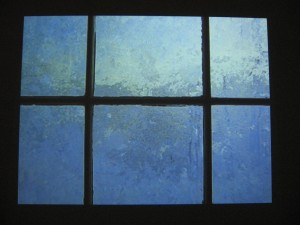
Ice is accompanied by dreamy music by Hans Otte. The color shifts and motion are subtle and barely visible in much the way as the change of daylight over the course of a day is barely visible.
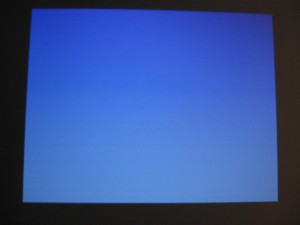
Twenty-Four colors is a shifting color-field screen representing the changing sky over 24 hours. It reminds me of Jeremy Blake, and I don’t know how Arnold arrived at the colors–whether they are based on time-lapse photos of the sky, whether they are computer-generated impressions of the sky, whether they are a composite of several days. The results however are scrumptious, at times subtle gradients of shades of blue, sometimes dramatic and improbable striped gradients of reds and oranges and pinks combined for a sunset effect.
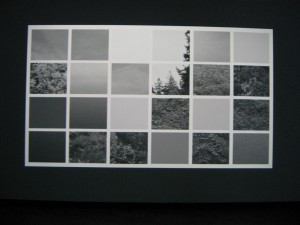
A fractured landscape in Blue Green Grey represents vegetation and sky, also over time. The grid breaks up the look of landscape, forcing attention to the light levels, but denying the pleasure of a view. All the pieces are about the passing of time and the experience of light and nature. At the same time they raise questions about what is real and what is not-real. The melting frost on the window reminded me of the peaceful pleasure of sitting on a porch, watching the rain fall. I didn’t want to leave. The exhibit will remain up until May 2.
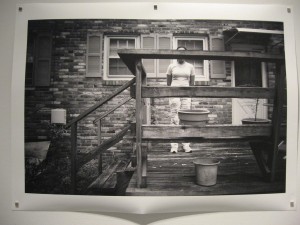
Also at DCCA, is the Option of Last Resort, an exhibit of black-and-white documentary photos by Gabriela Bulisova of Iraqi refugees in the United States. The images are moving, and Bulisova’s sense of light and dark works visual magic. Some of the content is more pointed, as in the image above. Sometimes, it is merely documentary. The exhibit is up to May 30.
I also talked to artist Andrew Wapinski, whose resin-coated foil landscapes in his show Wasteland reminded me of airplane views of farmland and virgin territory. The material overwhelms the dark story of a landscape in danger. I admired his command of the materials, however. Here’s an image on my Flickr. His show is up to April 18.
Coming soon to DCCA–NEW, the Member’s Juried exhibition juried by none other than Roberta. The show includes work from 31 artists, including Leslie Mutchler (TX), Ephram Russell (PA) and Trevor Reese (NY). Roberta will also deliver a talk Thursday, April 15 at 6 p.m. in conjunction with the show, which runs Friday, April 9 to July 25.


